We can compare four photos below of Dallas, Texas, to see how polluted our environment has become in a short of amount of time.


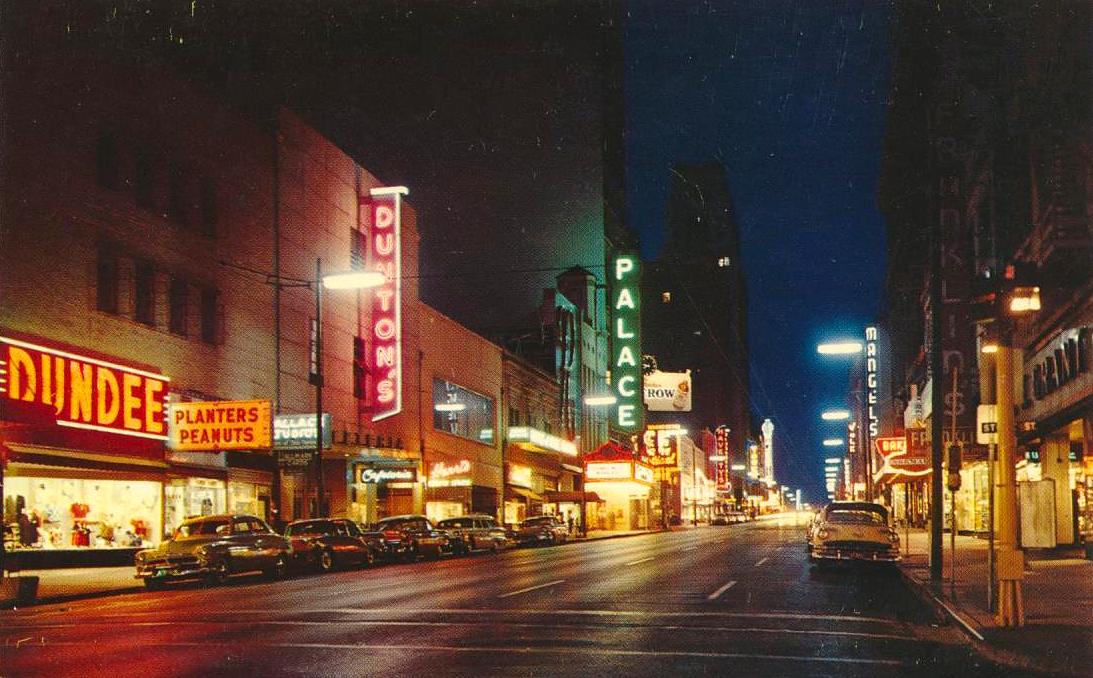

Artificial light is a pollutant, and this light pollution is having severe effects on human health and the functioning of the entire biological ecosystem. The natural night is a fundamental resource that is critical for the proper functioning of cellular organisms, including humans. Just as air and water require protection from pollutants, so too does the natural night resource.
Protecting the Natural Night
The Australia National Light Pollution Guidelines provide us with a fundamental guiding principle: “Start with natural darkness and only add light for specific purposes.” Not only will adhering to this principle protect the wildlife, it will also protect humans. Keep the natural night. If artificial light is really, really, really needed, then using it must be justified. Add it if necessary, but justify the quantity, the color temperature, the location, the height, the time-of-use, and the quality of the light. All outdoor lighting must be fully shielded, diffused and spatially uniform.
The photo below was taken at Observatory Park in Northeast Ohio and shows a perfect example of what responsible outdoor lighting can look like. Read about the park here.

Light Pollution
Light pollution has been increasing at a rate of 2% per year globally. This pollution is wiping out wildlife and causing serious health issues for humans. LEDs are increasing this light pollution.
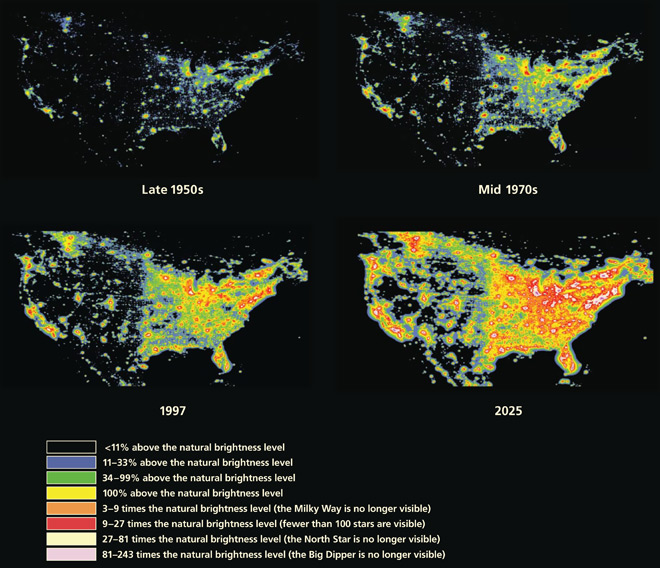
Municipal Code
The following city ordinance will eliminate a significant amount of light pollution and light trespass. You can submit this to your city council and request that the city update their Municipal Code under the Nuisance section.
Section 1.1.1 Light Trespass Nuisance Prevention
A. Outdoor lighting must be fully shielded to prevent the light from trespassing beyond property lines.
B. Outdoor lighting must not exceed 2700 Kelvin Correlated Color Temperature.
C. To protect public and environmental health, outdoor lighting must be turned off when not in immediate use.
D. Outdoor lighting that creates a discriminatory barrier for an individual with a disability is prohibited.
E. A citizen may initiate an enforcement action for this section by submitting the address of the property and a photo of the offending light at night to Code Enforcement.
Human Health
Blue wavelength light controls circadian rhythms. As the sun rises, the amount of blue wavelength light increases, causing us to be more energetic, but also resulting in cell damage. As the sun sets, the energetic blue wavelength light recedes and the longer red wavelengths appear. This reduction in blue wavelength light increases the production of the hormone melatonin, which causes us to relax and initiates the process of cell repair.
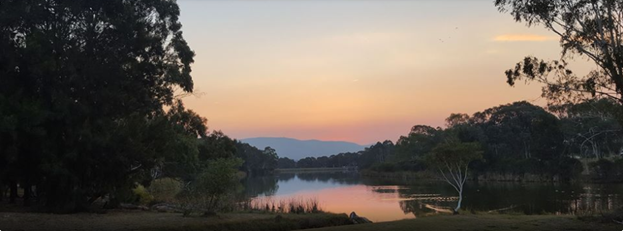
Numerous research studies have shown that Artificial Light at Night (ALAN) is a toxin that is harmful to human health. Below is a categorized list of several of these studies.
INTERRUPTION OF SLEEP
March, 2021 – Do No Harm: The Beginning of the Age of Healthy Hospital Lighting – Under blue wavelength light, melatonin is suppressed, circadian timing is disrupted, and total sleep time is decreased.
January, 2021 – Moonstruck Sleep: Synchronization of Human Sleep with the Moon Cycle Under Field Conditions – Artificially lit environments, which can acutely inhibit sleep, also entrain the central body clock in the brain that controls the timing of sleep leading to a delayed onset of sleep and a shorter nocturnal sleep bout.
January, 2016 – Effects of Blue Light on the Circadian System and Eye Physiology – Light has a cumulative effect and many different characteristics; for example: wavelength, intensity, duration of the exposure, time of day. Blue light exposure poses a danger to circadian rhythms.
August, 2014 – The Effects of Light at Night on Circadian Clocks and Metabolism – Disruptions in circadian clock mechanisms are associated with weight gain.
EYE INJURY
July, 2020 – Comparison of Ophthalmic Toxicity of Light-Emitting Diode and Organic Light-Emitting Diode Light Sources – LED light induces oxidative stress and stress-response pathways, which result in retinal cell death.
February, 2017 – Light-emitting-diode induced retinal damage and its wavelength dependency in vivo -LED blue-light exposure poses a great risk of retinal injury.
October, 2016 – Blue Light: What are the Risks to Our Eyes? – Exposure to blue light risks ocular injury and the effects of blue light exposure are cumulative.
GANGLION CELL INJURY
February, 2020 – Light-Induced Retinal Ganglion Cell Damage and the Relevant Mechanisms – Retinal ganglion cells (RGCs) are the bridging neurons that connect the retinal input to the visual processing centers within the central nervous system. Excessive light damages these RGCs.
HEART DISEASE
March, 2022 – Light Exposure During Sleep Impairs Cardiometabolic Function – Ambient nighttime light exposure is implicated as a risk factor for cardiometabolic disease.
INCREASED INSULIN RESISTANCE
March, 2022 – Light Exposure During Sleep Impairs Cardiometabolic Function – Exposure to artificial light at night increases insulin resistance.
MOOD DISORDERS
January, 2017 – Timing of Light Exposure Affects Mood and Brain Circuits – Artificial light at night is associated with mood disorders.
CANCER RISK
February, 2021 – Associations Between Artificial Light at Night and Risk for Thyroid Cancer: A Large US Cohort Study – There is a 55% increase of risk of thyroid cancer due to exposure to artificial light at night.
October, 2018 – Melatonin: An Anti-Tumor Agent in Hormone-Dependent Cancers – Exposure to light-at-night, which abolishes the nocturnal peak of melatonin, is associated with an increase in the risk of breast and prostate cancer
AUTISM SPECTRUM DISORDER
March, 2022 – Outdoor Light at Night and Autism Spectrum Disorder in Shanghai, China: A Matched Case-control Study – Exposure to bright light at night is significantly associated with risk of developing Autism Spectrum Disorder.
PREMATURE BIRTH
December, 2020 – Light pollution, sleep deprivation, and infant health at birth – Exposure to artificial light at night increases the risk of premature birth by 13%.
Additional Studies – There are many more studies on how artificial light negatively impacts human health.
Ecosystem
Numerous studies have shown that the natural night resource is fundamental to the proper functioning of cellular organisms. Below is a list of a few of these studies.
August, 2021 – Street Lighting Has Detrimental Impacts on Local Insect Populations – Artificial light at night greatly reduces insect abundance and blue/white LED light has an even greater negative impact on insect populations.
March, 2021 – Mechanisms and Mitigation: Effects of Light Pollution on West Nile Virus Dynamics – Light pollution is driving infectious disease patterns in nature and increasing the risk of West Nile virus transmission.
August, 2019 – Anthropogenic Light Disrupts Natural Light Cycles in Critical Conservation Areas – Anthropogenic lighting drastically alters nocturnal environments, threatening a wide range of species by disrupting light regimes that regulate fundamental biological processes such as reproduction, foraging,
and predator defense.
Additional Studies – There are many more studies on how artificial light negatively impacts the ecosystem.
Crime and Safety
Safety and security are often used to justify the use of artificial light at night outdoors. However, the research studies repeatedly show that the idea that artificial light at night increases safety or reduces crime is a myth. Below is a list of several of these studies.
March, 2022 – Street lighting may help rather than hinder vehicle crime – The use of streetlights increases vehicle property crimes.
November, 2017 – Part Night Light Report, 2017 – There is no evidence that artificial light at night reduces levels of crime, anti-social behavior or the risk of being killed or seriously injured.
September, 2015 – The Effect of Reduced Street Lighting on Crime and Road Traffic Injuries at Night in England and Wales: A Controlled Interrupted Time Series Analysis – There was no evidence from the study showing that turning off the streetlights increased crime, nor did turning off the streetlights increase
traffic accidents.
December, 1997 – Dark Campus Programs Reduce Vandalism and Save Money – Turning off the lights reduces crime on school campuses.
Additional Studies – There are additional studies all showing the same thing: Artificial light does not reduce crime and does not improve safety.
Light Trespass Nuisance
This article is about how pollution is a taking of property rights and how the courts have diluted property rights when “invisible” substances trespass onto property, but only when this trespass benefits the public good. The case law from the article shows that light is a pollutant, that light trespass is a nuisance, and that light trespass constitutes an illegal taking of property rights. Below are the supporting cases:
1959 Martin v. Reynolds Metals – “We think that a possessor’s interest in land as defined by the considerations recited above may, under the appropriate circumstances, be violated by a ray of light, by an atomic particle, or by a particulate of fluoride.”
1913 Richards v. Washington Terminal – “We deem the true rule, under the Fifth Amendment . . . to be that while the legislature may legalize what otherwise would be a public nuisance, it may not confer immunity from action for a private nuisance of such a character as to amount in effect to a taking of private property for public use.”
Bormann v. Board of Supervisors, in 1998, led to a similar ruling. The Iowa Supreme Court held unconstitutional state “right to farm” statutes that permitted odors to invade other properties, because the laws constituted a taking of the property rights of those who were subjected to them.
While light trespass is not yet commonly explicitly listed as a nuisance, numerous local Codes have listed light as a nuisance. Because LED light is so much more intense and powerful than previous technologies, and often with far more energetic blue wavelength light, light trespass has become a major new nuisance. To be clear: light trespass is a nuisance. Below are some examples of light trespass nuisance codes and laws.
Law Insider – This definition states that light trespass is light emitted by a luminaire that shines beyond the boundaries of the property on which the luminaire is located.
Gilgal Pointe Restrictions, Michigan – “No outdoor lighting nuisance shall be permitted.”
Camden, South Carolina – “Any artificial light source which creates glare observable within the normal range of vision, under normal weather conditions, from any property other than the property where the light source is located is considered a nuisance and is prohibited.”
Rancho Cordova, California – “Nuisance Prevention. All outdoor lighting shall be designed, located, installed, directed downward or toward structures, shielded, and maintained in order to prevent glare, light trespass, and light pollution.”
Canary Islands – Some of the strongest light pollution laws in the world, including electromagnetic contamination.
Street Lighting
The natural night must be protected. Each artificial light that is added to the outdoor environment adds to the light pollution which causes harm. This section starts with the safest, least amount of artificial light, and progresses through more and more harmful lighting.
- Natural Night – The natural night is filled with starlight and moonlight. Diurnal creatures use this time to sleep. Nocturnal creatures use the starlight and moonlight to eat, grow, and mate. Any added artificial light pollutes the natural night resource.

2. Bollard Style Low Pressure Sodium – With this light, we can see the sidewalk and still see the stars. LPS light is the safest, most energy efficient light source and the bollard keeps the light close to the ground where it is needed. This is the best choice for the built environment.

3. Pole style Low Pressure Sodium – Putting the Low Pressure Sodium light onto a pole increases coverage, but also increases light pollution.

4. Pole style High Pressure Sodium – HPS is less efficient than LPS, but about as efficient as LED. Shielding these lights would reduce light pollution. Using a 50-watt HPS instead of a 100-watt HPS is a 50% energy savings. Turning them off when not in use would conserve additional energy and protect the night resource.

5. LED Amber – Below are two examples of amber LED. The first image shows a single fully shielded luminaire with low lumens, providing the right amount of light. The second image shows an excessive number of luminaires, that are excessively tall, casting light onto neighboring houses. We cannot recommend LED streetlights because many individuals cannot neurologically tolerate LED radiation.
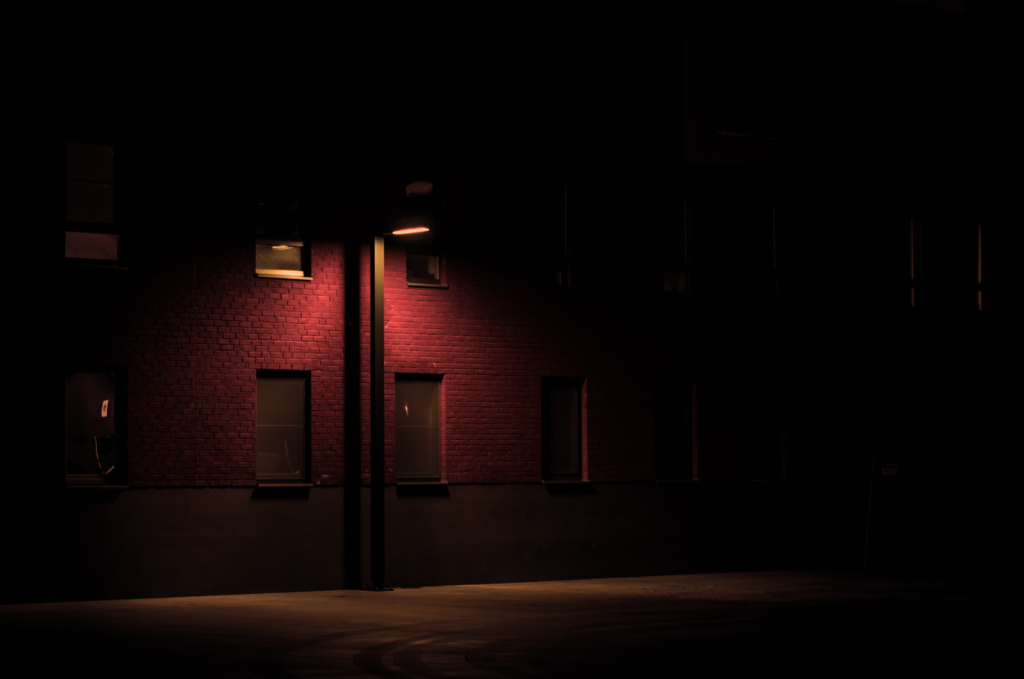

6. 3000K LED – 3000K is the maximum Correlated Color Temperature recommended by the American Medical Association in their 2016 report. Research since that date shows that 3000K contains far too much hazardous blue wavelength light and that blue wavelength light has increased the rate of light pollution from 2% per year to 10% per year.

7. 4000K LED – Many city officials have falsely claimed that 4000K LED is just like moonlight. In the photo below, there are seven of these LED mini-moons causing significant human and environmental damage with nobody even using the lights.
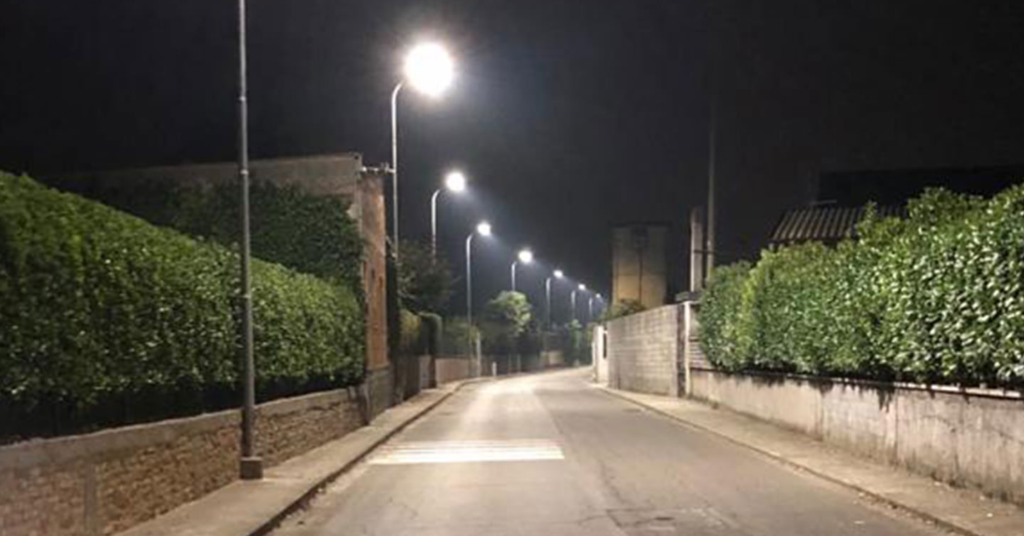
Resources
The Negative Effects of Artificial Light – This document by the Soft Lights Foundation lists numerous studies that confirm that artificial light at night is a toxin. This document also contains the studies that show that artificial light at night does not increase safety or reducing property crime. Light trespass is a nuisance. The document is double-spaced so that it can be submitted to the Courts.
Wall of Shame – Categorized photos of horrendous LED lighting.
Wall of Fame – Examples of better lighting.
Photo Credits:
https://www.cbc.ca/news/science/light-pollution-increasing-1.6719034
https://palomarskies.blogspot.com/2009/05/why-astronomers-love-low-pressure.html
https://commons.wikimedia.org/wiki/File:High_Pressure_Sodium_Lamps.JPG
https://www.savingourstars.org/amberleds
https://www.ignialight.com/en/blog/detail/id/10/environment
https://verdeenergygroup.com/environmental-street-lighting-the-3000-kelvin-solution/
https://www.agcled.com/case-studies/500pcs-4000k-ra70-led-street-light-project.html